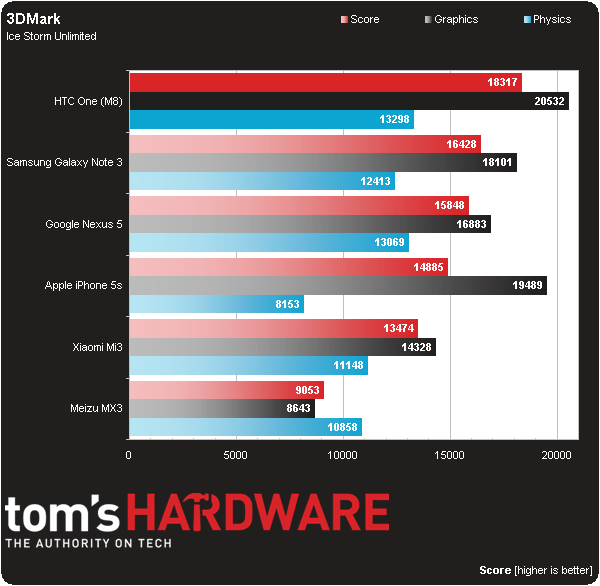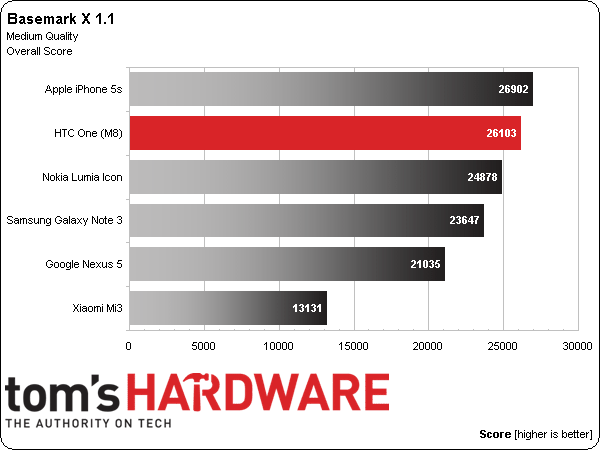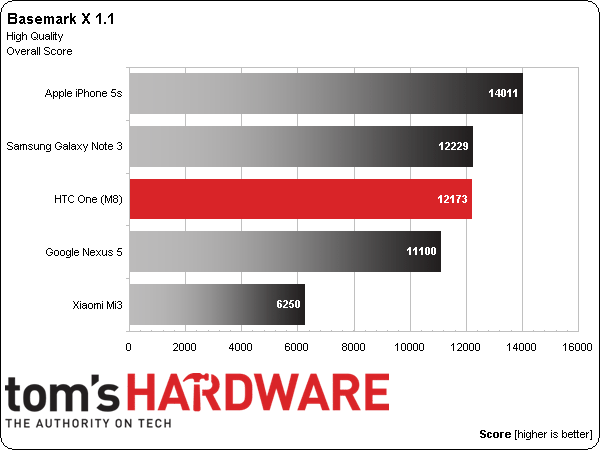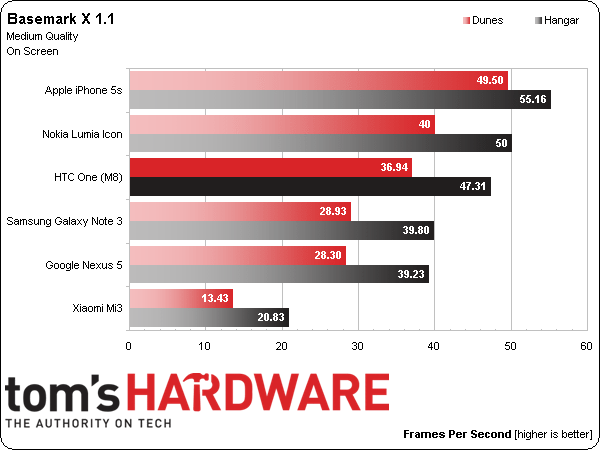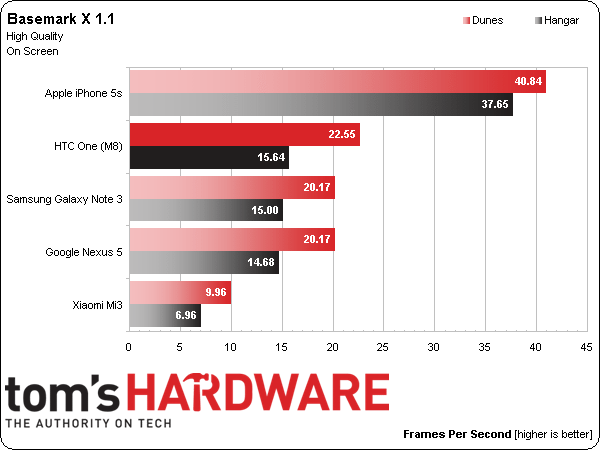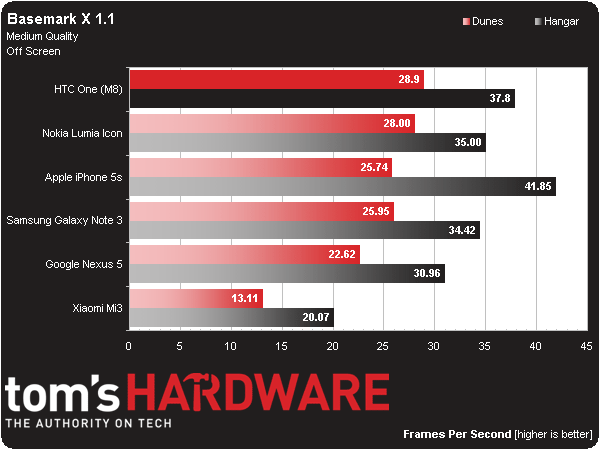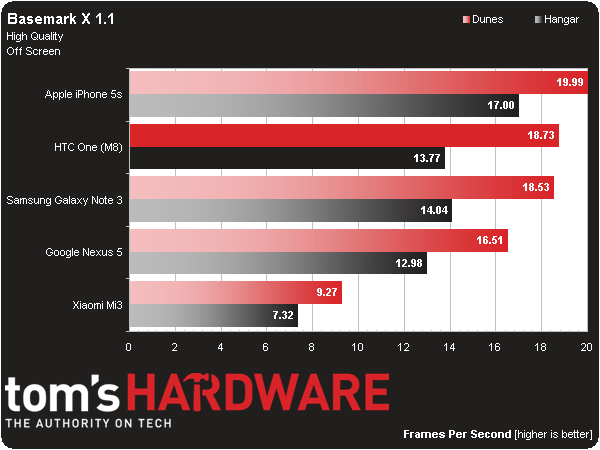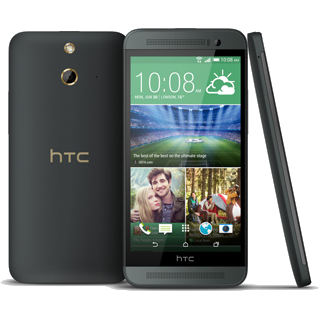HTC One (M8) And One (E8) Review: A Flagship And Its Sidekick
We run HTC's flagship Android smartphone, the One (M8), through our exhaustive benchmark suite. In addition, we take a close look at its less expensive sibling, the HTC One (E8). Both devices are compared and tested against a strong field of competition.
Results: GPU Benchmarks
3DMark Ice Storm Unlimited
Futuremark has become a name synonymous with benchmarking, and the company's latest iteration of 3DMark offers three main graphical benchmarks: Ice Storm, Cloud Gate, and Fire Strike. Currently, the DirectX 9-level Ice Storm tests are cross-platform for Windows, Windows RT, Android, and iOS.
Ice Storm simulates the demands of OpenGL ES 2.0 games using shaders, particles, and physics via the company's in-house engine. Although it was just released in May of last year, the on-screen portions of Ice Storm are already outpaced by modern mobile chipsets; Nvidia's Tegra 4 and Qualcomm's Snapdragon 800 easily max out the Extreme version (1080p with high-quality textures). However, Ice Storm Unlimited, which renders the scene off-screen at 720p, is still a good gauge of GPU-to-GPU performance.
3DMark favors the One's newer Snapdragon 801 SoC, and HTC's flagship boasts the highest Adreno 330 GPU clock rate, so it walks away with a clear win.
Basemark X 1.1
Basemark X 1.1 is a benchmarking tool by Rightware that utilizes the popular Unity game engine, allowing for device comparisons across a wide range of platforms, including Android, iOS, and Windows Phone 8. This also has the advantage of making the benchmarks correlate well with the real-world performance of numerous games available on the market.
Basemark X 1.1 is known to favor newer iOS-based devices. But the One (M8) manages to come close to Apple's iPhone 5s using the medium detail preset. When high details are dialed in, HTC's device loses a bit of ground and ties for second place with Samsung's Galaxy Note 3.
The Basemark X 1.1 on-screen tests closely mirror what we saw in the overall scores.
With output resolution factored out as a variable, the One (M8) and its Snapdragon 801 SoC take first place in the medium quality Dune test, but fall to second in with high-quality details enabled. There, Apple's iPhone makes a comeback.
Get Tom's Hardware's best news and in-depth reviews, straight to your inbox.
GFXBench 3.0
Kishonti GFXBench 3.0 is a cross-platform GPU benchmark supporting both the OpenGL ES 2.0 and OpenGL ES 3.0 standards. It comprises game-like scenarios, as well as lower-level tests designed to measure specific subsystems. See GFXBench 3.0: A Fresh Look at Mobile Benchmarking for a complete test-by-test breakdown of this suite.
In the GFXBench 3.0 On Screen tests, Apple's iPhone 5s benefits greatly from a relatively low-resolution display. HTC's One (M8) comes closer in the off-screen Manhattan benchmark, though, and it takes first place in the T-Rex test.
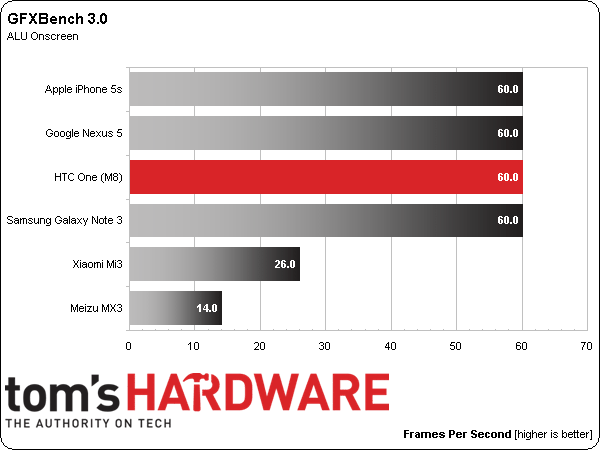
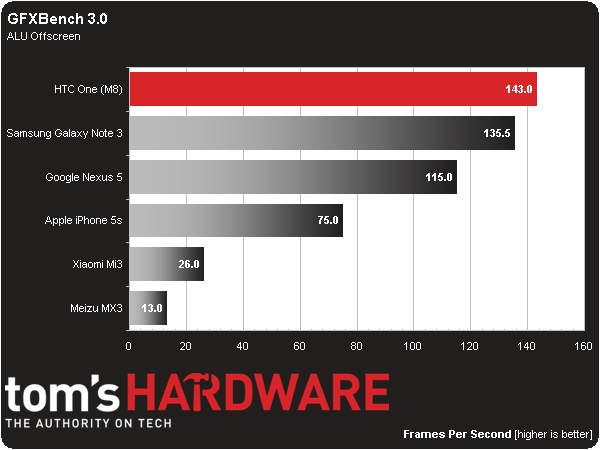
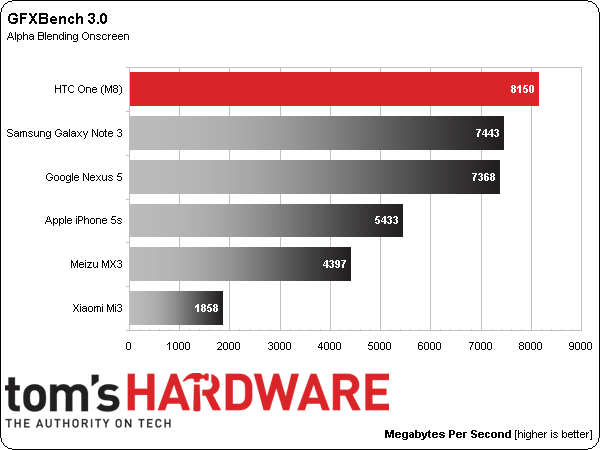
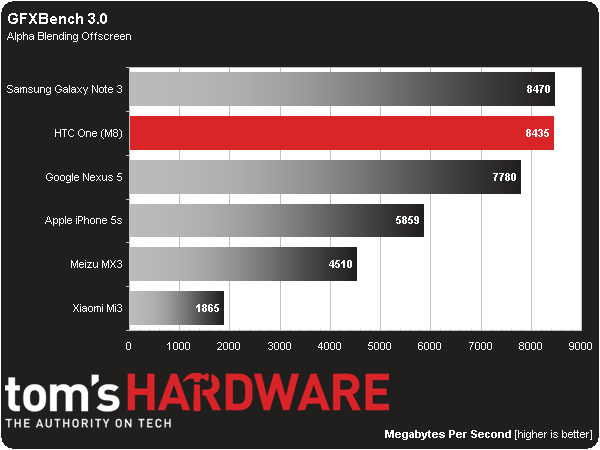

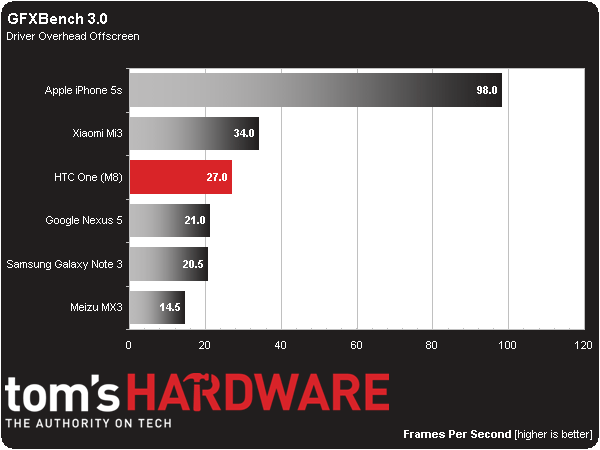
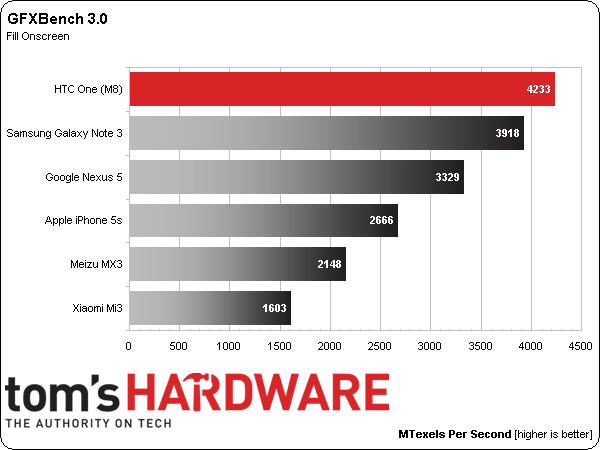
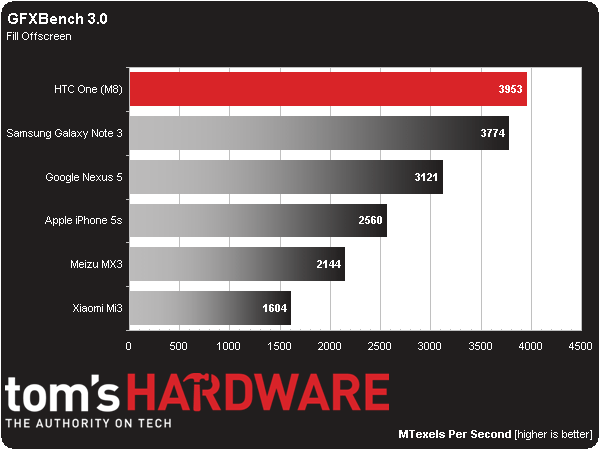
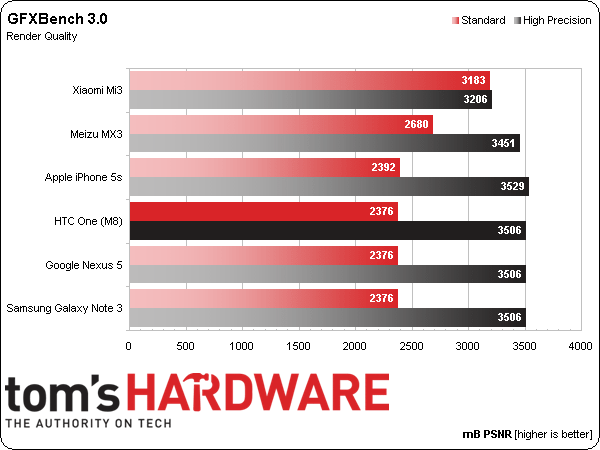
The Driver Overhead metric highlights one of iOS' strengths, while the Fill tests show the potential of Qualcomm's Adreno 330 GPU. Strong graphics is simply inherent to the processor HTC chose for its One (M8) and (E8).
Current page: Results: GPU Benchmarks
Prev Page Results: CPU Benchmarks Next Page Results: Web BenchmarksDon Woligroski was a former senior hardware editor for Tom's Hardware. He has covered a wide range of PC hardware topics, including CPUs, GPUs, system building, and emerging technologies.
-
Heironious The pricing says 1,309.00 for it on Amazon? May as well buy it straight from an authorized dealer for half that. It's a gorgeous phone and I don't regret picking it up over the Samsung S5 (mostly because of the cheap plastic of Samsung).Reply -
LordConrad I love my M8 except for that stupid depth-camera, they should remove it and bring back OIS.Reply -
JOSHSKORN Just stop comparing to the iPhone 5s until a comparable 64-bit chip is released and implemented into Android phones. Until then, the iPhone 5s "appears to be faster" (only on benchmarks) but as many of us know, it justifies buying an iPhone for most users, even though a 64-bit processor in a mobile phone may be pointless (for now).Reply -
CaedenV If I were the android type I would get this phone hands-down. If they released a WP version then I would jump all over it over the stuff Nokia has been pushing out in 2014 so far.Reply
The only 'complaints' that I have are the lack of wireless charging (impossible due to the metal back plate right?), and the lack of a sort of Nokia Glance screen (though other android devices are picking up similar features). The cover seems to bring that Glance functionality... but I really don't like that cover and would rather not. The thing is that with my lowly 920 I have built myself an upright wireless charging stand, and with glance screen enabled whenever the device has access to power, it makes a most excellent clock/notification center. With my 920 approaching 2 years old I am starting to look for a replacement, and as of the moment I am not finding one. WP has seemingly abandoned the high end devices, I am not apple compatible, and Android devices have a lot of really neat features... but then you deal with non-standard UIs and gimmickey software. I really hope something really good comes out before Christmas because the 920 is not getting any younger. -
stevessvt Wow, these benchmarks are, by far, the lowest I have seen for the M8. 27K in Antutu? Was power saver on?Reply -
Avus Holy!! $1300 for a phone.... I am too cheap for that...Reply
I am currently using Nexus 5 and happy with it. If I want to buy a phone now, I may want to get an Oneplus One. -
envy14tpe Great phone but that camera is what holds me back from buying it. So Samsung or Google gets my money, although Apple has the best camera. (However, no Apple..screen wayyy to small...Android flagship phones have been over 4" for 2+ years)Reply -
TeKEffect Me and my friend are both having problems with the usb port. They went cheap on the cheapest part. I would google the problem before getting the one.Reply
